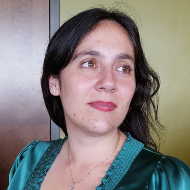There are a lot of reasons why I love funding teacher requests. The purpose of NCSE's Science Booster Club Project is fundraising as much as it is outreach, and the purpose of the fundraising is to support teachers. Although we’ve recently received requests for professional development scholarships, what we do right now to support teachers (and avoid brawls with school administrators) is fund durable equipment requests. Last month we managed to raise enough microgrant money to get durable equipment valued under $300 into four local science classrooms. Crowded science classrooms. Two of our teachers work with over 400 students a year. This funding cycle will benefit more than 1,350 students a year. That brings our total number of students impacted by material donations to around 1,800 in our first year of operation. The Science Booster Club Project started on April 13th of 2015.
It's great to have that kind of impact, but I'll admit that as much as I love funding teacher requests, I really, really like the opportunities for connections these grants provide. The grants help me meet a lot of teachers. And I learn what kind of things—fairly small, modest things—teachers want and can’t get from their administrations.
This microgrant cycle attracted a lot of applicants. Many of the things teachers asked for really steamed my clams. It was all very basic equipment. Balances, thermometers; in the most egregious case, safety goggles. The teacher in question told me that in her AP biology class students had to share one pair of safety goggles for every three students.
The teachers were not able to get this basic, essential equipment through their school budgets. All the teachers I talked to said they would probably have ended up buying this basic equipment themselves, out of pocket, if NCSE had not been there to fund the request.
I wondered what was going on at these schools. How can a school not have money for safety goggles? The situation was as mystifying as it was blood-boiling. I was very glad for the opportunity to deliver the equipment and see for myself what was going on.
And that’s when things got even more interesting. One of the teachers, who had absolutely no money in the budget for equipment, supplies, or reagents, taught in a newly renovated classroom with a full complement of instructional technology. The lab had chemical-resistant benches and smartboards, but the forty kids in her biology class had to take turns using two thermometers, which were also shared with the physics and chemistry classes. Check out this lovely modern classroom below, which looks really great and has no money at all for basic equipment.

Another teacher had a smartboard and tablets for each student, yet taught in a classroom that hadn't been renovated since the 1920s. She works with hundreds of students every day, but needed our help to get basic safety equipment,
“It doesn’t work,” she said, cheerfully, of the smartboard. “We mostly just waste time trying to convince it to work. And they took out the blackboard.”
Despite the fancy technology, all three classrooms I visited last week were overcrowded, with science teachers working with as many as 40 middle school students in the classroom at a time. All three of the teachers proudly showed me the low-tech supplies they had scored through relationships with friends at universities: microscopes and glassware that would have been thrown out, incubators on loan, last year’s books.
What is going on here? A year ago, I sure thought I knew. I thought the problem was that school districts were not investing enough in science classrooms. Now it seems that while lack of resources is indeed a problem, it turns out that when there are resources, they’re not necessarily the right ones! There is a complete disconnect between district funding and what teachers need. A lot of people are pushing technology in every classroom, and that’s very nice. All kids should be learning how to harness modern information technology. But it's weird to go into a classroom and find that modern information technology is all they have—and that anything needed for an authentic, hands-on science experience, any equipment or materials whatsoever, has been begged, bought, or possibly stolen by the teacher.
What can I say? My experience in these classrooms suggests that there are many stories like these that need to be told. If, as a society, we care about improving STEM education, we need to know what’s going on. It may seem disruptive, or sexy, or forward-thinking to leap-frog over traditional laboratory supplies into the high tech future. But what is the evidence that such investments will have a greater impact than providing teachers with what they say they need, instead of what we think they need? The NCSE Booster Club funding model can provide first aid in this situation, and that is really important. But we need a bigger conversation. What’s going on in your school? If you’re a teacher, tell us your story. If you’re not, ask a local science teacher. Let us know what you find out.
*Hyperbole alert. I have no reason to believe any teachers are guilty of theft.

